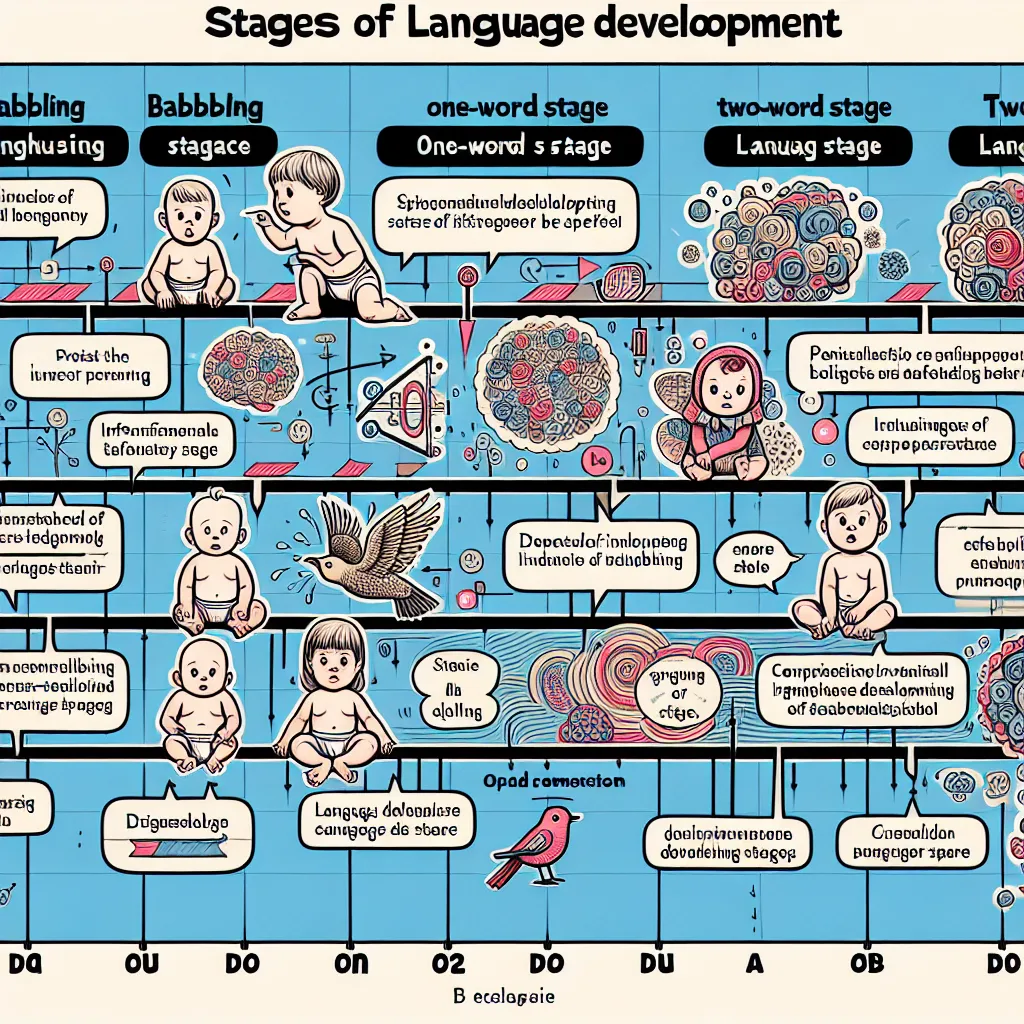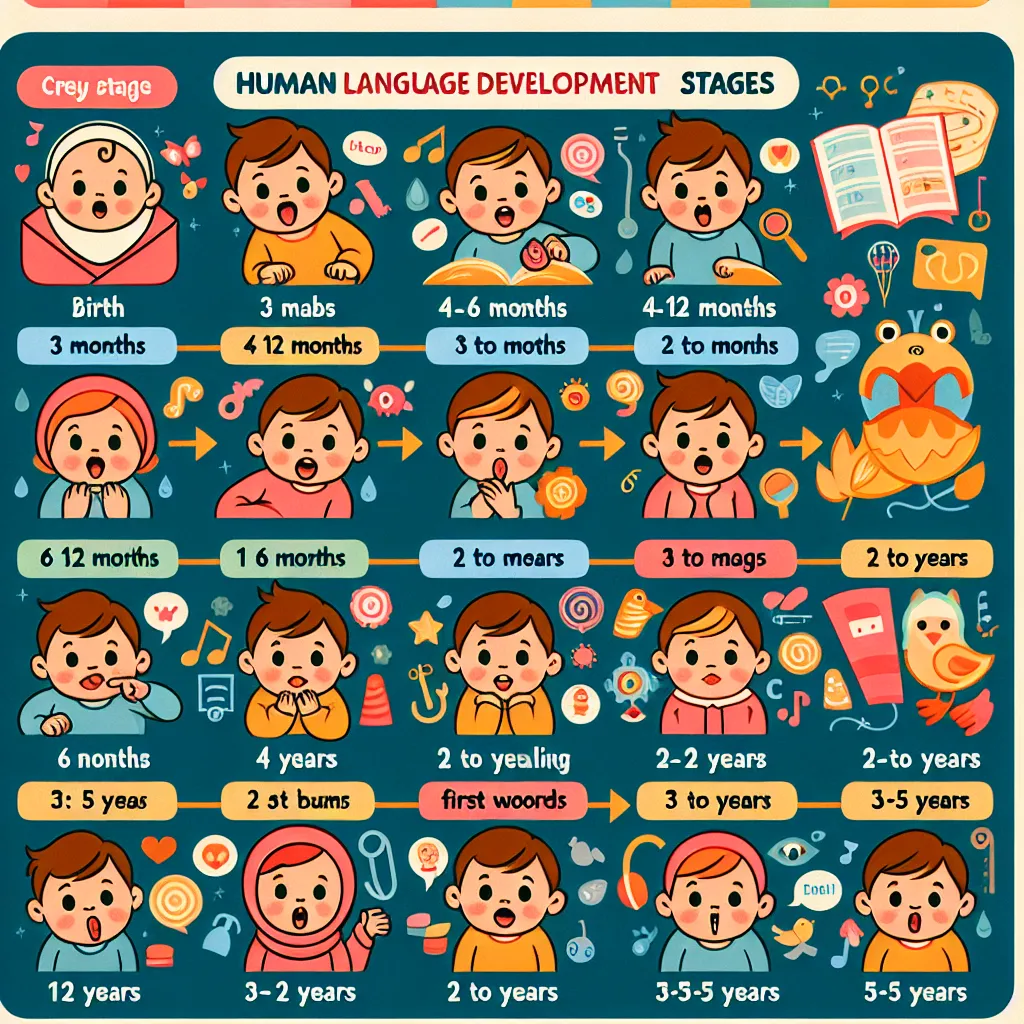Ask AI on The Internet
Question: Describe the typical milestones and progressions observed in language development during this period. (4)
Language development in early childhood is marked by several key milestones and progressions. Here's a breakdown of typical language development stages: 1. **Infancy (0-12 months)**: - **Cooing and Babbling**: Around 2-3 months, infants start making cooing sounds, which evolve into babbling by 6-9 months. Babbling includes repetitive consonant-vowel combinations like "ba-ba" or "da-da." - **First Words**: Infants typically speak their first understandable words around 12 months. These words are often simple and directly related to their immediate environment, such as "mama" or "dada." 2. **Toddlerhood (1-3 years)**: - **Vocabulary Explosion**: Between 18-24 months, toddlers experience a rapid increase in vocabulary, often referred to as a "vocabulary explosion." They start learning new words at a remarkable pace. - **Two-Word Sentences**: Around 18-24 months, children begin forming two-word sentences or "telegraphic speech," such as "want cookie" or "big truck." - **Improved Comprehension**: By age 2, toddlers understand much more than they can express. They can follow simple instructions and understand common words and phrases. 3. **Preschool Age (3-5 years)**: - **Complex Sentences**: By age 3, children's sentences become more complex, often including multiple words and a basic understanding of grammar. They start using simple conjunctions like "and" or "but." - **Narrative Skills**: Preschoolers begin telling stories and describing events in sequence. Their ability to relate past experiences or imagine future scenarios improves. - **Questions and Commands**: By age 4 or 5, children frequently ask questions and can understand and follow more complex commands. They start grasping concepts like time (yesterday, today, tomorrow) and place (up, down, inside, outside). 4. **Early School Age (6-8 years)**: - **Expanded Vocabulary and Grammar**: Children continue to expand their vocabulary and become more proficient in grammar. They learn more about tenses, plurals, and other grammatical nuances. - **Reading and Writing**: Skills in reading and writing start to develop more strongly, with children learning to decode words and write simple sentences. They often start recognizing familiar words and, by the age of 7 or 8, can read age-appropriate texts with some fluency. - **Social Use of Language**: Children increasingly understand the social aspects of language, such as taking turns in conversation, using language for different purposes (to persuade, inform, entertain), and recognizing the appropriate tone and style for different situations. Each child develops language at their own pace, and these milestones can vary widely among individuals. If there are concerns about a child's language development, it may be beneficial to consult with a pediatrician or a speech-language pathologist for a more comprehensive assessment.
Think your answer is better than the AI's? Post it below.
Other Most Relevant Posts:
 Ask AI: Describe the typical milestones and progressions observed in language
development during this period. (4)
Ask AI: Describe the typical milestones and progressions observed in language
development during this period. (4)
 Ask AI: List then define the pre-linguistic and the adult-like language stages in
language development.
Ask AI: List then define the pre-linguistic and the adult-like language stages in
language development.
 1. **Language Development: Pre-Linguistic to Adult Proficiency**
2. **Emergent Literacy: Building Language Foundation**
3. **Grade R's Impact on Language Acquisition**
4. **Early Childhood Langua
1. **Language Development: Pre-Linguistic to Adult Proficiency**
2. **Emergent Literacy: Building Language Foundation**
3. **Grade R's Impact on Language Acquisition**
4. **Early Childhood Langua
 Ask AI: List then define the pre-linguistic and the adult-like language stages in
language development. (4)
Ask AI: List then define the pre-linguistic and the adult-like language stages in
language development. (4)
Question Tags
If you want your question answered by an AI, click here.



Post your own comment: